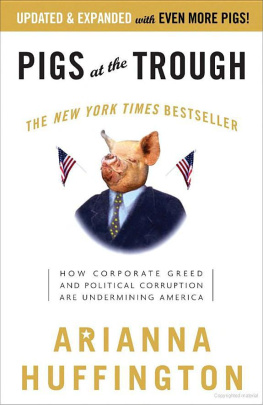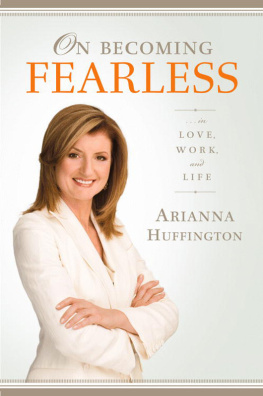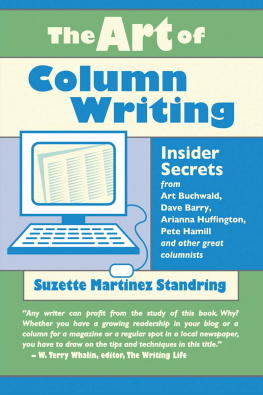Acknowledgments
WRITING THIS BOOK was a juggling actkeeping the big themes clear while tracking all the startling details unfolding every day on the front pages of our newspapers. Keeping ahead of this moving target could not have been done without a great team. Deep thanks go to Billy Kimball, who was shuttling back and forth between L.A. and Long Island, and to Peter Abbott, who landed here for a year from Cambridge, our shared alma mater in England, and went back the day after the book went to press. I hope that his decision to return to Cambridge to do a Ph.D. on the use of terror in Greek and Shakespearean tragedy was not entirely the result of researching the pigs. Additional thanks to Chris Kyle, Moira Brennan, Jon Hotchkiss, Roy Sekoff, Stephen Sherrill, Victor Abalos, Leslie Borja, Mia Mazadiego, Prof. Christopher Gill, and to my good friends Mary Arno, David Booth, Bob Borosage, Marc Cooper, David Corn, Lynda Obst, and Lynn Sweet, who read the manuscript at different stages and greatly improved it.
Many thanks also to my anonymous sources, both at the top of the corporate world and among the recently downsized who provided fascinating leads and key details. Like Deep Throat, my inside sources reminded me to follow the money. I cant name them but my thanks go to them all the same. I can name, however, Steven Weiss, Scott Klinger, Russell Mokhiber, Robert Weissman, and Micah Sifry.
All my gratitude to my amazing editor, Emily Loose, whose outrage at the pigs never flagged, even after her fourth masterly editorial pass on the same text; and to my incredible agent, Richard Pine, whose involvement embraced every detail from the books contract to the books content. To Steve Ross, who welcomed me back into the Crown fold, Barbara Marks for the enthusiasm she brought to the books promotion, and Caroline Sincerbeaux for all the many ways she helped the pigs come to life. Many thanks also to Barbara Sturman for her work in creating an attractive design for the book, to Amy Boorstein for her expert management of the copyediting, and to Derek McNally for his efforts to make this book come in on time.
The book is dedicated to my younger daughter, Isabella, who together with her older sister, Christina, provided constant joyous interruptions.
P.S. My thanks and gratitude go to Whitney Snyder, Nour Akkad, and Roy Sekoff, as well as my editor at Three Rivers Press, Sean Desmond, for all their help with Pigs at the Trough circa 2009.
Also by Arianna Huffington
The Female Woman
After Reason
Maria Callas: The Woman Behind the Legend
The Gods of Greece
Picasso: Creator and Destroyer
The Fourth Instinct
Greetings from the Lincoln Bedroom
How to Overthrow the Government
On Becoming Fearless in Love, Work, and Life
Fanatics & Fools
Right Is Wrong
Afterword to the 2009 Edition
W HEN I WROTE Pigs at the Trough, I didnt know that in just six years America would find itself in the midst of a slew of fresh corporate outragesoutrages that would lead to a worldwide economic meltdown. But I cant say that I am surprised. The reason is simple: the system that allowed the scandals at Enron, Tyco, Global Crossing, and others was never really reformed. Yes, there were window-dressing changes, and Band-Aid legislation. But the guiding philosophythat the free market would regulate itself, and that Wall Street always knew bestremained in place. Indeed, it was given a much freer rein.
So its been dj vu all over again. With one big difference that makes this current crisis so frightening: the scale of it all, and the speed with which it accelerated. And the devastatingand far-reachingimpact this new round of corporate malfeasance has had.
Yes, any economic system has its ups and downs, its booms and busts, but the almost unimaginable sums being tossed around in this crisis have awakened people to the fact that this downturn is not part of the normal cyclical nature of a healthy economic system.
Now, even more than at the beginning of the decade, the orgy of greed, fraud, and theft (legal and otherwise) has been up for a few, but downreally, really downfor pretty much the rest of the world. This rot has spread like a cancer throughout our political and financial systems. And, as with real cancer, treating it with half measures only allows it to mutate and strengthen and wreak more havoc when it next surfaces. As weve seen, not only is the scale of the destruction worse with each outbreak, the lag time between them is also growing shorter. We had only five or six years between the last remission and the current metastasiswith a short burst of illusory economic expansion in between.
When I wrote in Pigs at the Trough that I was hopeful that a critical mass of individuals and groups mobilized by the injustice given flesh and blood by the current scandals would rise up and demand real change, I was not being quixotic or nave. Though I acknowledged that when the people come up against the interests of the established financial/political class, the people usually lose out, it doesnt have to be the case.
But what we learn by taking a look back at the outrages detailed in Pigs at the Trough is that we need to break the cycle. Not the bull market/bear market cycle, but the cycle of shock, then outrage, then a few high-profile show trials, then punishment of a few culprits, then some meaningless reforms, and then we all move on until it starts again.
Now we find ourselves right in the middle of that cycle. The financial bandits know that if they just lay low for a bit, the storm of outrage will blow over. They can just wait it out, feed the people a few reformist scraps, and then return to plundering.
In April 2009, Goldman Sachs announced a profit of $1.8 billion dollars. This buoyed its stock price and helped boost its plan of raising $5 billion so it could quickly repay the government the $10 billion it had received in bailout money (little mention was made of repaying the $12.9 billion in taxpayer funds Goldman received as an AIG counterparty). So howd the company do it? Good ol Wall Street ingenuity. Goldmans fiscal year used to end in November. In late 2008, Goldman began aligning its upcoming fiscal year with the calendar year. That meant the report for the first quarter of 2009 simply omitted December 2008and the $1.3 billion pretax loss the company suffered that month.
Everyone on Wall Street wants to return to the pre-meltdown status quo as quickly as possible. But we should not let them. And we should certainly not allow Wall Street to, as I warned in Pigs at the Trough, publicly embrace reform while working diligently behind the scenes to undermine it.
In an April 2009 speech, President Obama brought up the biblical parable of one house built on sand, and another built on rock. We cannot rebuild this economy on the same pile of sand, he said. We must build our house upon a rock. We must lay a new foundation for growth and prosperity.
I agree. But the presidential parable raises the question of why President Obama has staffed his economic team with so many people, like Tim Geithner and Larry Summers, who have a long history in building sand castles.
Around the same time as Obamas speech, Nancy Pelosi announced plans for a congressional commission that would investigate what happened on Wall Street that led to the crisis. It would be modeled on the bipartisan Pecora Commission, which looked into the causes of the crash of 1929 and eventually led to the creation of the Securities and Exchange Commission. The purpose of the new commission would be to make sure it does not happen again. Forgive me if, for now, I cannot muster a reaction more hopeful than Well see.







